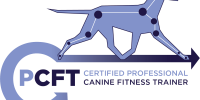Introduction
Training your dog is an essential part of responsible pet ownership. It not only ensures your dog’s safety but also enhances the bond you share with them. One of the most crucial commands to teach your dog is recall, or coming when called. A reliable recall can prevent accidents, provide more freedom for your dog during off-leash activities, and create a stronger trust between you and your furry friend. For more insights into dog training, check out our comprehensive guide to the dog training landscape in Singapore and the essential obedience training steps.
Step 1: Wait for the Behavior to be Offered, and Reward It Timely
The first step in teaching recall is to use operant conditioning, a fundamental method in dog training. Start by waiting for your dog to come to you naturally. When they do, immediately reward them with a treat or praise. For example, if your dog approaches you while you’re in the living room, use this opportunity to reward them. This technique, known as operant conditioning, helps reinforce the desired behaviour by associating it with a positive outcome. For a deeper understanding, read our article on operant conditioning.
Step 2: Shape the Behaviour
If your dog doesn’t come to you naturally, you can shape the behaviour by guiding them. Use a treat or a toy to lure your dog towards you. Hold the treat in front of their nose and slowly move backward. As they follow you, they are learning to come towards you. Once they reach you, reward them generously. Over time, reduce the movement until your dog learns to come towards you without needing to follow the lure.
Step 3: Add a Cue
Once your dog consistently comes to you when lured, it’s time to introduce a cue. Choose a word like “come” or “here,” or a visual signal like a hand gesture. Say the cue clearly as your dog starts moving towards you and reward them when they arrive. For example, when you’re in the park and your dog is on a leash, say “come” as they start walking towards you, then reward them with a treat and praise.
Step 4: Remove the Lure
Gradually phase out the use of the lure by making it less obvious. Start by using the cue without showing the treat or toy, but still rewarding your dog when they come to you. This encourages your dog to respond to the cue alone, rather than relying on the lure. For instance, during a walk, call your dog to come to you without showing the treat first, then reward them once they arrive.
Step 5: Be Generous and Strict with the Reward
Consistency is key when training recall. Be generous with rewards when your dog responds correctly, and ensure that you are strict about rewarding only when they come to you as asked. This clarity helps your dog understand the expected behaviour and reinforces the importance of following the cue. For example, if your dog hesitates or gets distracted but eventually comes to you, reward them to reinforce the behaviour.
Timing of the Reward is Key
Precise timing is crucial in dog training. Make sure to reward your dog immediately when they reach you after hearing the recall cue. This immediate reinforcement strengthens the connection between the action and the reward, making the training more effective. For instance, if your dog comes to you when called, give them a treat as soon as they arrive, rather than waiting until you return home.
Step 6: Review and Iterate
Regularly review your training progress. If your dog is struggling with recall in certain situations, reassess and adjust your approach. Consistency in your commands and rewards will help solidify the behaviour. If needed, revisit earlier steps to reinforce the training. For example, if your dog struggles with recall in the park, practise more in quieter areas before reintroducing the park setting.
Step 7: Wean off the Treats
As your dog becomes more reliable with recall, start to gradually phase out treats. Use intermittent rewards, such as praising or playing with your dog instead of always giving treats. This maintains the behaviour without making your dog dependent on constant treats. For instance, sometimes give a treat, other times offer a belly rub or playtime as a reward for coming when called.
Step 8: Increase the Difficulty
Once your dog has mastered recall in a controlled environment, increase the difficulty by introducing distractions, varying the distance, and practising in different settings. For example, practice recall in the park, then try it at the beach or in a busy neighbourhood. This helps generalise the behaviour, ensuring your dog responds to the recall cue in any situation.
Troubleshooting Common Issues
If your dog is not responding to recall, consider these common issues:
- Distractions: Practice recall in a quiet, distraction-free environment initially and gradually introduce distractions. If your dog gets distracted by other dogs, start in a quiet area and slowly introduce more stimulating environments.
- Inconsistent Cues: Ensure everyone in your household uses the same cue consistently. If some family members use “come” and others use “here,” it can confuse your dog.
- Lack of Motivation: Use high-value treats or toys that your dog finds particularly rewarding. If your dog is not food-motivated, try using their favourite toy or a special playtime.
- Anxiety or Fear: Avoid scolding your dog if they don’t come immediately. Instead, make coming to you a positive and rewarding experience. If your dog seems fearful, try using a softer tone and ensuring the environment feels safe.
Conclusion
Teaching recall is a vital skill that enhances your dog’s safety and strengthens your bond. With patience, consistency, and positive reinforcement, your dog can learn to come when called reliably. If you need additional support or personalised guidance, consider our private dog training services. At Pet Coach SG, we’re here to empower you with the knowledge and confidence to successfully train your dog, ensuring a happy and harmonious relationship.








